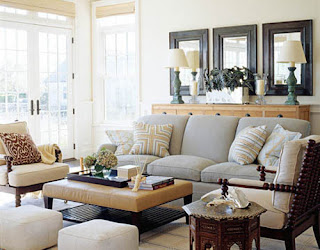Washing clothes by hand and
hanging them to dry is the most energy-saving approach to laundry in terms of
electricity. But let’s get real. Most of us don’t have the personal
energy to hand-wash and air-dry all of our clothes!
You most likely spend hundreds of
dollars per year on electricity to wash and dry your clothes, but it’s easy to
save electricity in your laundry room with some simple tricks. Get ready to
shrink your electric bill – but not your clothes.
Wash Right
|
Energy-Efficient
Laundry Guide
|
|
|
Clothing
Type
|
Washing
|
|
Darks,
bright colors, delicates
|
COLD
wash
Tip:
Cold water keeps colors from bleeding and fading, and prevents shrinkage.
|
|
Silk
|
COLD,
hand-wash
|
|
Wool
|
COLD,
hand-wash
|
·
Use cold water. According to ENERGY STAR almost 90% of the energy consumed by your washing machine is used simply to
heat water. Given that, you can save a lot of energy by washing your clothes in
cold water. In fact, switching to cold-water clothes washing for a year can
save enough energy to run an average home for up to two weeks! Cold-water
washing also keeps colors bright, reduces wrinkling and won’t set stains.
·
Although you may find that
regular detergent is sufficient,try out cold-water detergents that
are specifically formulated to work in cooler temperatures.
·
Run a full load. The machine will use the same amount of mechanical energy, regardless of
how full it is. If you don't run a full load, be sure to set the water level
for the amount of laundry you are running.
·
Use energy-saving settings. Avoid the excessively hot “sanitary cycle,” but do choose the
“high spin” option to cut down on drying time. And don’t wash for longer than
you need to – some loads only need 10 minutes of washing.
·
Set your water heater to 120
degrees F (instead of the usual 140 F) so you can save
energy even when washing clothes in hot or warm water.
Get Smart about Drying
·
Sort similar fabrics together, starting with a load of fast-drying fabrics, and do
back-to-back loads to take advantage of residual heat.
·
Clean the lint filter after each dryer load to improve air circulation and cut
down on drying time.
·
Use energy-saving settings. Select low temperature for delicates and medium for most clothes.
Choose auto-dry instead of timed-dry to prevent over-drying, which
causes shrinkage and static electricity and generally wears clothes out.
·
Get a drying rack for “almost-dry” clothes, delicates and silks. Fabrics like wool should
be laid flat to dry.
·
Throw in a clean, dry towel or
tennis ball to dry clothes quicker. The towel
absorbs moisture, while the tennis ball helps circulate air between clothes.
Buying a New Washing Machine?
If you are in the market for a washing machine, get one with the ENERGY STAR label. ENERGY STAR washing
machines use 37% less energy and 50% less water than regular ones – both of
which can save you hundreds of dollars over the life of the machine.





